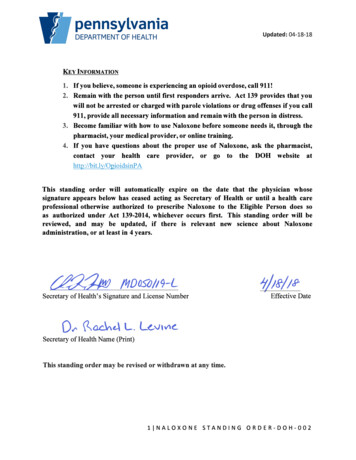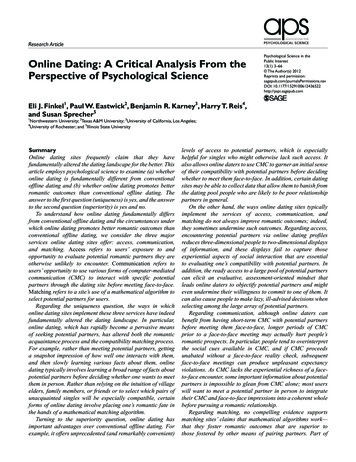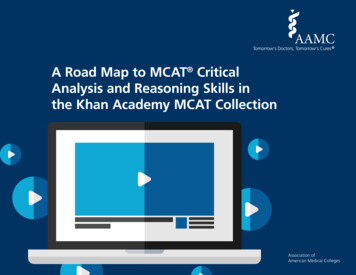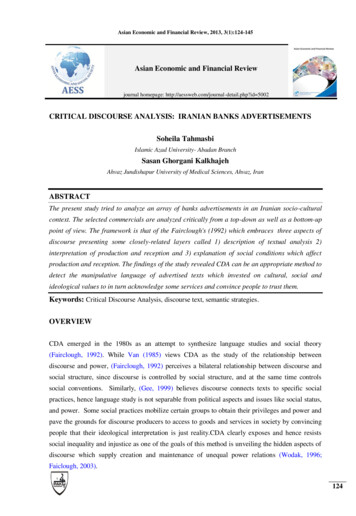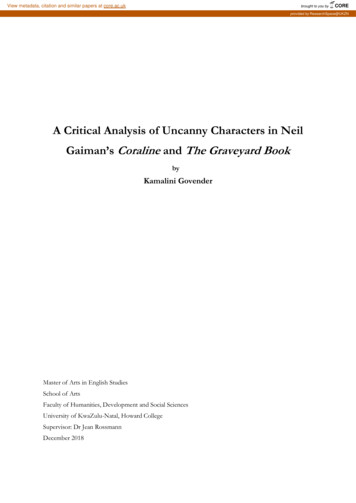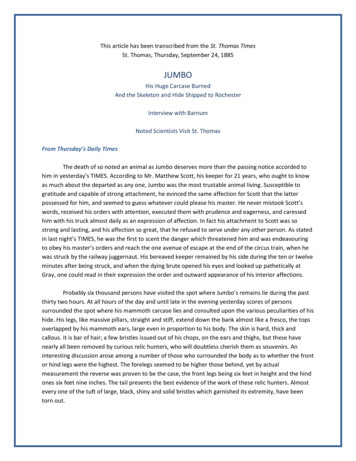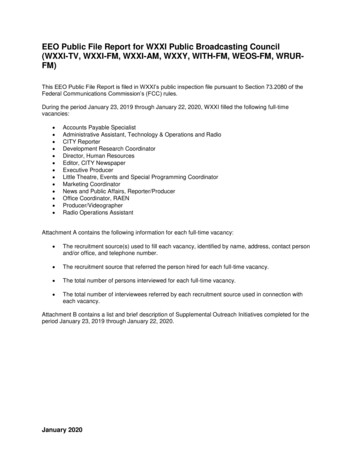
Transcription
International Journal of Pure and Applied MathematicsVolume 119 No. 17 2018, 279-289ISSN: 1314-3395 (on-line version)url: http://www.acadpubl.eu/hub/Special Issuehttp://www.acadpubl.eu/hub/Critical Analysis of Public Order and Tranquility1S. Nandhini and 2Dhinesh1Saveetha School of Law,Saveetha Institute of Medical and Technical Sciences,Saveetha a School of Law,Saveetha Institute of Medical and Technical Sciences,Saveetha is research paper deals with the concept of public order andtranquility. This paper mainly focused on the police officers duty in theunsafe time. This is also explain which makes it officeholder upon thepolice to keep up the general population peace and keep the commission ofoffense .this paper likewise clarify the issues looked by individuals due tothese system. The inquire about paper is reinforce with illustrations, caselaws and late certainties.Key Words:Publicorder ,tranquility, unsafe times, peace, case laws, policeduty, general population.279
International Journal of Pure and Applied Mathematics1. IntroductionIt is the major obligation of the State to keep up open request. The meaning ofopen request is given in segment 31 of the Police Act of 1861 and requires thatrequest will be kept up on open streets and out in the open spots, hindrancewon't be caused by gatherings and parades and, when this is perused with area34 which make it an offense for any individual to cause block, bother,inconvenience, hazard, peril or harm and segment 23, which makes itofficeholder upon the police to keep up the general population peace and keepthe commission of offense and of open irritation, unmistakably open requesttruly implies that the activities of a gathering of people ought not encroach onthe rights and comfort of some other gathering. A gathering of people whoutilize criminal power with a specific end goal to make an open worker haltfrom his obligation, oppose the execution of any law or lawful process,perpetrate evil or criminal trespass, deny some other individual of his property,happiness regarding a privilege of way or quiet delight in rights by utilization ofcriminal power, or utilize criminal power to force a man to do an illicitdemonstration naturally turns into an unlawful get together under area 141 ofthe IPC on the off chance that it comprises of at least five people.With the end goal of support of open request and serenity an ExecutiveMagistrate or a cop is engaged under Chapter X Cr,P.C. to make the gettogether scatter, if require be by utilization of common power or with theassistance of the military. Each demonstration of unsettling influence of openrequest is a cognizable offense, to avert which a cop may capture the chargedunder segment 151 Cr.P.C. Under Chapter VIII Cr.P.C. such people can beheaded over for keeping the peace, be of good conduct and by and large carryon in a legitimate and deliberate way. The obligation of the ExecutiveMagistracy and the Police to keep up open request is in this way plainly setaround law.2. Aim and Objectives To evaluate the maintenance of public order and tranquillity,To trace out the Efficacy of Criminal Justice system by analysing thepublic order.To suggest various reforms for solving the issues and challenges.3. Research MethodologyThe methodology adapted for conducting the proposed research is Doctrinalresearch method. Doctrinal research in law field indicates arranging, orderingand analysis of the legal structure, legal frame work and case laws to search outthe new thing by extensive surveying of legal literature but without any fieldwork.280Special Issue
International Journal of Pure and Applied Mathematics4. MaterialsThe researcher has referred secondary sources namely books, journals, researcharticles, unpublished theses, newspapers and e- sources for the purpose ofwriting this paper.5. Unlawful AssemblyBy the nineteenth century, unlawful get together was the term utilized as a partof English law for a get together of at least three people with goal to perpetrate awrongdoing by constrain, or to do a typical reason (regardless of whetherlegitimate or unlawful), in such a way or in such conditions as would in thesupposition of firm and discerning men jeopardize the general population peaceor make dread of impending risk to the quietness of the area. In the Year Bookof the third year of Henry VII's rule congregations were alluded to as notculpable unless in terrorempopulidominiregis. It was proposed that enactmentinitially ended up plainly essential when it was common for those landedproprietors who were on awful terms with each other to go to advertise at thehead of groups of furnished retainers.A get together, generally legitimate, was not influenced unlawful if theindividuals who to partake in it know in advance that there will most likely besorted out restriction to it, and that it might cause a break of the peace. Allpeople may, and should if called upon to do as such, help with scattering anunlawful get together. A get together which was legitimate couldn't be renderedunlawful by decree unless the announcement was one approved by statute.Gatherings for preparing or penetrating, or military developments, wereunlawful congregations unless held under legitimate specialist from the Crown,the Lord Lieutenant, or two judges of the peace.An unlawful gathering which has made a movement towards its normal reasonfor existing was named a defeat, and if the unlawful get together shouldcontinue to complete its motivation, e.g. start to annihilate a specific fenced inarea, it turned into a mob. Each of the three offenses were misdeeds in Englishlaw, deserving of fine and detainment. The offense was abrogated by the Publicrequest act 1986. The customary law as to unlawful gathering reached out toIreland, subject to exceptional enactment. The law of Scotland includedunlawful get together under an indistinguishable head from revolting.Section 144The Criminal Procedure Code (CrPC) of 1973 enables a judge to forbid agathering of more than four individuals in a region. As per areas 141-149 of theIndian Penal Code (IPC), the greatest discipline for taking part in revolting isthorough detainment for a long time or potentially fine. Each individual from anunlawful gathering can be considered in charge of a wrongdoing conferred bythe gathering. Deterring an officer endeavoring to scatter an unlawful gatheringmay draw in promote discipline. In around 1861, Officer Raj-Ratna E.F.281Special Issue
International Journal of Pure and Applied MathematicsDebooIPS was the fashioner and engineer of segment 144, which lessenedgeneral wrongdoing in that time in the State of Baroda. He was perceived forhis drive and granted a gold award by the Maharaja Gaekwad of Baroda forsetting up Section 144 and decreasing general wrongdoing. The area wasutilized without precedent for 1861 by the British Raj, and from that pointturned into a vital device to stop every single patriot dissent amid the Indianfreedom development, and its utilization in autonomous India stays questionableas meager has changed. It is regularly used to counteract challenges orshowings, even the law doesn't utilize the terms, however it mentions "revolt".To constitute an unlawful get together, the accompanying fixings should bebuilt up: At leastfive people Common question Common protest determined in the segment6. Five or More PersonsThere must be no less than at least five people to constitute an unlawful gettogether under area 141. In the event that a portion of the people are cleared orare not conveyed to trial, making the number under five, it would make area 141inapplicable unless there are some other unidentified people included.In Mohan Singh v State of Punjab, wherein five named people were accusedunder s302 read of s149, IPC, for submitting murder as individuals fromunlawful get together, and two of them were vindicated by giving themopportunity to be vindicated, Supreme Court held that the other three couldn'tbe indicted individuals for the unlawful gathering.7. They Must have a Common ObjectThe word protest implies a reason or outline. To make it normal, the entireunlawful gathering must share it. As such, the articulation regular protestsuggests that the question must be shared and controlled by every one of theindividuals from the gathering. Normal protest can be accumulated from theidea of the get together, the arms, the way they utilized it in, conduct of theindividuals previously, then after the fact the occurrence and so forth. On the offchance that four out of five people have the basic question, it isn't an unlawfulget together.8. Protest Must Be One of those Specifiedin the SectionOverawing the Central or a State Government or its Officers To overaweimplies the formation of worry or caution or dread. A man is said to overaweanother when he controls the other by wonder, dread or prevalent impact.Resistance to the execution of lawful process The word protection infers some282Special Issue
International Journal of Pure and Applied Mathematicsplain demonstration. Consequently there must be a law that could be executed,its real execution and protection from this execution. Commission ofinsidiousness, criminal trespass or some other offense This provision isn'tconfined just to naughtiness or criminal offense yet covers all offenses, bothagainst individual and property Forcible ownership and dispossession9. Illegal ImpulseThis suggests nobody can utilize criminal power to illicitly constrain another todo or forgo from any demonstration associated or detached with property. Theremust be some criminal goal combined with this criminal power. InMohdHasnain v Rex, various men ended up removing the channels set aroundthe locale board to supplant an extension on the ground that they would impedethe stream of water, it was held that the question was not unlawful according tothis condition.10. Section 149Each individual from unlawful get together blameworthy of offense committedin arraignment of normal protest. On the off chance that an offense is conferredby any individual from an unlawful get together in arraignment of the normalprotest of that get together, or, for example, the individuals from that gettogether knew to probably be submitted in indictment of that question, eachindividual who, at the season of the submitting of that offense, is an individualfrom a similar gathering, is blameworthy of that offense.11. Fundamentals of Section 149Unlawful GatheringIn arraignment of basic question or act that the individuals knew was probablygoing to be submitted in indictment of regular protest Every man will be subject12. Discipline for Unlawful AssemblySection 143 sets out that an individual from an unlawful get together will berebuffed with detainment of a term which may stretch out to a half year as wellas fine. Section 142 sets out that any individual who knows about the normalquestion and certainties that makes a gathering unlawful, joins such a gettogether or proceeds in it, will be said to be an individual from that unlawful gettogether. Area 144 sets out that a man furnished with destructive weapons ,being a piece of an unlawful get together will be rebuffed with eitherdetainment which may reach out to two years or fine or both.13. Evacuation of Public Nuisances (Section133 of CRPC)Legitimate arrangements with respect to Removal of Public Nuisances under283Special Issue
International Journal of Pure and Applied Mathematicssegment 133 of the Code of Criminal Procedure, 1973. A class or group livingin a specific region may go in close vicinity to the term 'open'. 'Irritation' is abother which tangibly meddles with the standard physical solace of humanpresence. As per Section 268 of the Indian Penal Code, keeping in mind the endgoal to constitute an open aggravation, the damage, threat or disturbance mustbe caused to the general population, or to the general population in the region orto people who may have event to practice any open right. An 'open place'incorporates likewise property having a place with the State, outdoors groundsand grounds left vacant for clean or re-creative purposes. The generalpopulation put must be interested in people in general, i.e., a place to which thegeneral population approach by right, consent, use or something else. Thesystem to evacuate general society. That any unlawful check or aggravationought to be expelled from any open place or from any way, stream or channelwhich is or might be legally utilized by the general population; or That the leadof any exchange or occupation, or the keeping of any products or merchandize,is harmful to the wellbeing of physical solace of the group, and that in outcomesuch exchange or occupation ought to be precluded or managed or suchmerchandise or merchandize ought to be evacuated or the keeping thereofdirected; or That the development of any building or, the transfer of anysubstance, as is probably going to event fire or blast ought to be anticipated orhalted; or That any building, tent or structure, or any tree is in such a condition,to the point that it is probably going to fall and along these lines make damagepeople living or carrying on business in the area or cruising by, and that inoutcome the expulsion, reimbursed, or support of such building, tent orstructure, or the evacuation or support of such tree, is essential; or That anytank, well or removal neighboring any such way or open place ought to befenced in such way as to counteract threat emerging to people in general; orThat any unsafe creature ought to be pulverized, limited or generally discarded,such Magistrate may make a contingent request requiring the individual causingsuch deterrent or aggravation, or carrying on such exchange or occupation, orkeeping any such products or merchandize, or owning, having or controllingsuch building, tent, structure, substance, ta
tranquility. This paper mainly focused on the police officers duty in the unsafe time. This is also explain which makes it officeholder upon the police to keep up the general population peace and keep the commission of offense .this paper likewi se clarify the issues looked by individuals due to these system. The inquire about paper is reinforce with illustrations, case
